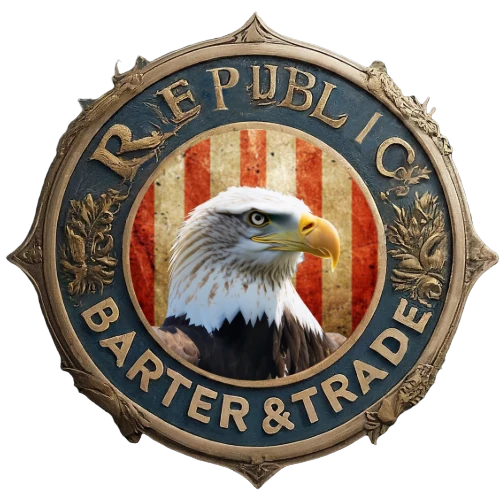Bartering is the exchange of goods or services without the use of money. It is a system that has been used by humans for thousands of years and has played a crucial role in the development of economies and societies. Understanding the history and evolution of bartering is important because it provides insights into how trade and commerce have evolved over time. By examining the origins of barter, its role in ancient civilizations, its importance in medieval society, its use in early American colonies, its significance during wartime, and its evolution into modern currency systems, we can gain a deeper understanding of the impact and potential of this economic system.
Key Takeaways
- Bartering has been around since ancient civilizations, where people exchanged goods and services without using money.
- In the Middle Ages, bartering was crucial for trade and commerce, and it helped build the foundation of medieval society.
- Early American colonists relied heavily on bartering to obtain goods and services, as currency was scarce.
- During wartime, soldiers often traded for basic necessities, such as food and clothing, using bartering systems.
- Bartering evolved into modern currency systems, but people still trade goods and services without money in modern times.
- Online platforms have changed the game for bartering, making it easier and more accessible.
- In developing countries, bartering remains a crucial economic system, helping people obtain necessary goods and services.
- Bartering has its pros and cons, with benefits such as flexibility and drawbacks such as the lack of standardization.
- The future of bartering is uncertain, but it has potential in a changing global economy, especially with the rise of sustainable and local economies.
The origins of barter: tracing back to ancient civilizations
Bartering can be traced back to ancient civilizations such as Mesopotamia, Egypt, and China. In these societies, people exchanged goods and services directly with one another, without the need for money. For example, in Mesopotamia, farmers would trade their surplus crops for tools or other goods they needed. In Egypt, bartering was common among craftsmen who would exchange their products for food or other necessities. In China, bartering was prevalent in rural communities where farmers would trade their agricultural products for household items.
Bartering played a crucial role in early economies as it allowed people to obtain goods and services that they needed but did not produce themselves. It facilitated trade and enabled individuals to specialize in certain skills or products. For example, a farmer could focus on growing crops while another individual could specialize in making tools. By exchanging their surplus goods, both parties benefited and were able to obtain what they needed.
Bartering in the Middle Ages: the importance of trade in medieval society
During the Middle Ages, trade became increasingly important as societies became more interconnected through the development of trade routes and markets. The growth of towns and cities led to an increase in trade and the establishment of guilds to regulate and protect the interests of merchants and craftsmen.
Trade routes such as the Silk Road and the Mediterranean Sea routes allowed for the exchange of goods between different regions and civilizations. Merchants would travel long distances to trade their goods, often bartering with local communities along the way. This exchange of goods and ideas contributed to the spread of knowledge and cultural exchange.
Guilds played a crucial role in regulating trade during the Middle Ages. They were associations of merchants or craftsmen who controlled the production and distribution of goods within their respective industries. Guilds set standards for quality, regulated prices, and protected the interests of their members. Bartering was common within guilds as members would exchange their products or services with one another.
The role of barter in early American colonies: how colonists traded goods and services
In the early American colonies, bartering was a common practice due to the scarcity of cash. The colonies were cash-poor societies, and many settlers did not have access to money. As a result, they relied on bartering to obtain the goods and services they needed.
Colonists would exchange goods such as crops, livestock, tools, and clothing with one another. For example, a farmer might trade his surplus corn for a pair of shoes made by a local cobbler. Bartering allowed colonists to obtain essential items without the need for money.
Bartering was also common between colonists and Native American tribes. The Native Americans had a wealth of resources such as furs, food, and medicinal plants that were highly valued by the colonists. In exchange for these goods, the colonists would offer items such as metal tools, cloth, and firearms.
Bartering during wartime: how soldiers traded for basic necessities
During times of war, bartering becomes even more important as soldiers often find themselves in situations where traditional currency is scarce or inaccessible. Soldiers have historically relied on bartering to obtain basic necessities such as food, clothing, and medical supplies.
In World War II, for example, soldiers would often trade cigarettes, chocolate, or other items from their rations in exchange for goods or services they needed. Bartering allowed soldiers to supplement their meager rations and obtain items that were not readily available through official channels.
Bartering during wartime is not limited to soldiers. Civilians also engage in bartering as a means of survival. In times of crisis or economic instability, people often turn to bartering as a way to obtain essential goods and services when traditional currency loses its value or becomes scarce.
The rise of currency: how bartering evolved into modern currency systems

While bartering has been a prevalent economic system throughout history, the development of currency systems gradually replaced it as societies became more complex and interconnected. The use of coins and paper money made trade more efficient and facilitated economic growth.
The use of coins as a medium of exchange dates back to ancient civilizations such as Greece and Rome. Coins were made from precious metals such as gold or silver and had a standardized value. This made trade easier as people could exchange goods for coins and then use those coins to obtain other goods or services.
The invention of paper money further revolutionized trade by providing a more convenient and portable form of currency. Paper money was first used in China during the Tang Dynasty and later spread to other parts of the world. It allowed for larger transactions and facilitated long-distance trade.
The advantages of using currency over bartering are numerous. Currency provides a standardized medium of exchange that is widely accepted, making trade more efficient and reducing the need for direct bartering. It also allows for the accumulation of wealth and the ability to save for future needs.
Bartering in modern times: how people still trade goods and services without money
While the use of currency is now widespread, bartering still exists in modern times. People continue to trade goods and services without the use of money, often as a way to save money or obtain items that they cannot afford to purchase.
One example of modern-day bartering is the sharing economy, where individuals exchange goods or services with one another. Platforms such as Airbnb and Uber allow people to rent out their homes or cars in exchange for money or other services. This form of bartering allows individuals to utilize their underutilized assets and obtain goods or services they need without spending money.
Another example is online bartering platforms, where individuals can trade goods or services directly with one another. Websites such as Craigslist and Freecycle facilitate these exchanges by connecting people who have something to offer with those who are in need of it. This form of bartering allows individuals to declutter their homes, reduce waste, and obtain items they need without spending money.
The impact of technology on bartering: how online platforms have changed the game
Technology has had a significant impact on the practice of bartering. Online platforms have made it easier than ever for individuals to connect and trade goods or services without the need for traditional currency.
Platforms such as Bunz and Swap.com allow users to list items they no longer need and trade them for items they want. These platforms provide a convenient way for individuals to declutter their homes, reduce waste, and obtain items they need without spending money.
However, there are also disadvantages to using technology for bartering. One challenge is the difficulty in valuing goods and services. Unlike traditional currency, which has a standardized value, the value of goods and services in a barter system can be subjective and vary from person to person. This can make it challenging to determine a fair exchange.
Another challenge is the lack of standardization in online bartering platforms. Unlike traditional markets or stores, where there are rules and regulations in place to protect consumers, online bartering platforms often lack these safeguards. This can make it difficult to trust the legitimacy of the goods or services being offered and can lead to potential scams or fraud.
Bartering in developing countries: how it remains a crucial economic system
In developing countries, bartering remains a crucial economic system, particularly in rural communities where cash is scarce or inaccessible. Bartering allows individuals to obtain essential goods and services that they need for survival.
In many developing countries, agriculture is the primary source of income for rural communities. Farmers often rely on bartering to obtain the tools, seeds, and other resources they need for farming. They may exchange their surplus crops for other goods or services such as clothing, medicine, or education.
Bartering is also common in informal economies, where individuals engage in small-scale trade and exchange goods or services without the use of money. This type of bartering is prevalent in street markets or informal settlements where cash is scarce and individuals rely on their skills or resources to obtain what they need.
The pros and cons of bartering: examining the benefits and drawbacks of this system
Bartering has several advantages that make it an attractive economic system. One of the main advantages is its flexibility. Bartering allows individuals to obtain goods or services without spending money, which can be particularly beneficial in cash-poor societies or during times of economic instability.
Bartering also promotes community building and social connections. When individuals engage in bartering, they often interact with one another directly, fostering relationships and creating a sense of community. This can lead to increased trust and cooperation among individuals.
However, there are also disadvantages to bartering. One drawback is the lack of standardization in valuing goods and services. Unlike currency, which has a standardized value, the value of goods and services in a barter system can be subjective and vary from person to person. This can make it challenging to determine a fair exchange and can lead to disputes or disagreements.
Another drawback is the difficulty in finding a match for a desired trade. In a barter system, individuals need to find someone who has what they want and wants what they have. This can be time-consuming and may require a significant amount of effort to find a suitable trade partner.
The future of bartering: exploring its potential in a changing global economy
The future of bartering is uncertain, but it has the potential to address economic inequality and promote sustainability in a changing global economy. Bartering can provide an alternative economic system that is more inclusive and equitable, particularly for marginalized communities or those who lack access to traditional financial services.
Bartering can also contribute to sustainability by reducing waste and promoting the reuse of resources. By exchanging goods or services instead of purchasing new items, individuals can reduce their consumption and minimize their environmental impact.
However, there are challenges to the widespread adoption of bartering in modern society. One challenge is the need for standardization and regulation. In order for bartering to be widely accepted and trusted, there needs to be rules and regulations in place to protect consumers and ensure fair exchanges.
Another challenge is the reliance on technology. While online platforms have made bartering more accessible, not everyone has access to the internet or the necessary technology to participate in online bartering. This can create a digital divide and exclude certain individuals or communities from participating in the barter economy.
In conclusion, bartering is an ancient economic system that has played a crucial role in the development of societies and economies throughout history. From its origins in ancient civilizations to its use in modern times, bartering has provided a means for individuals to obtain goods and services without the use of money.
While the use of currency has become widespread, bartering still exists in various forms today. Online platforms have made it easier than ever for individuals to connect and trade goods or services without the need for traditional currency. However, there are challenges to the widespread adoption of bartering, including the need for standardization and regulation, as well as the reliance on technology.
The future of bartering is uncertain, but it has the potential to address economic inequality and promote sustainability in a changing global economy. By understanding the history and evolution of bartering, we can gain insights into how this economic system has shaped societies and economies throughout history and explore its potential in the future.


